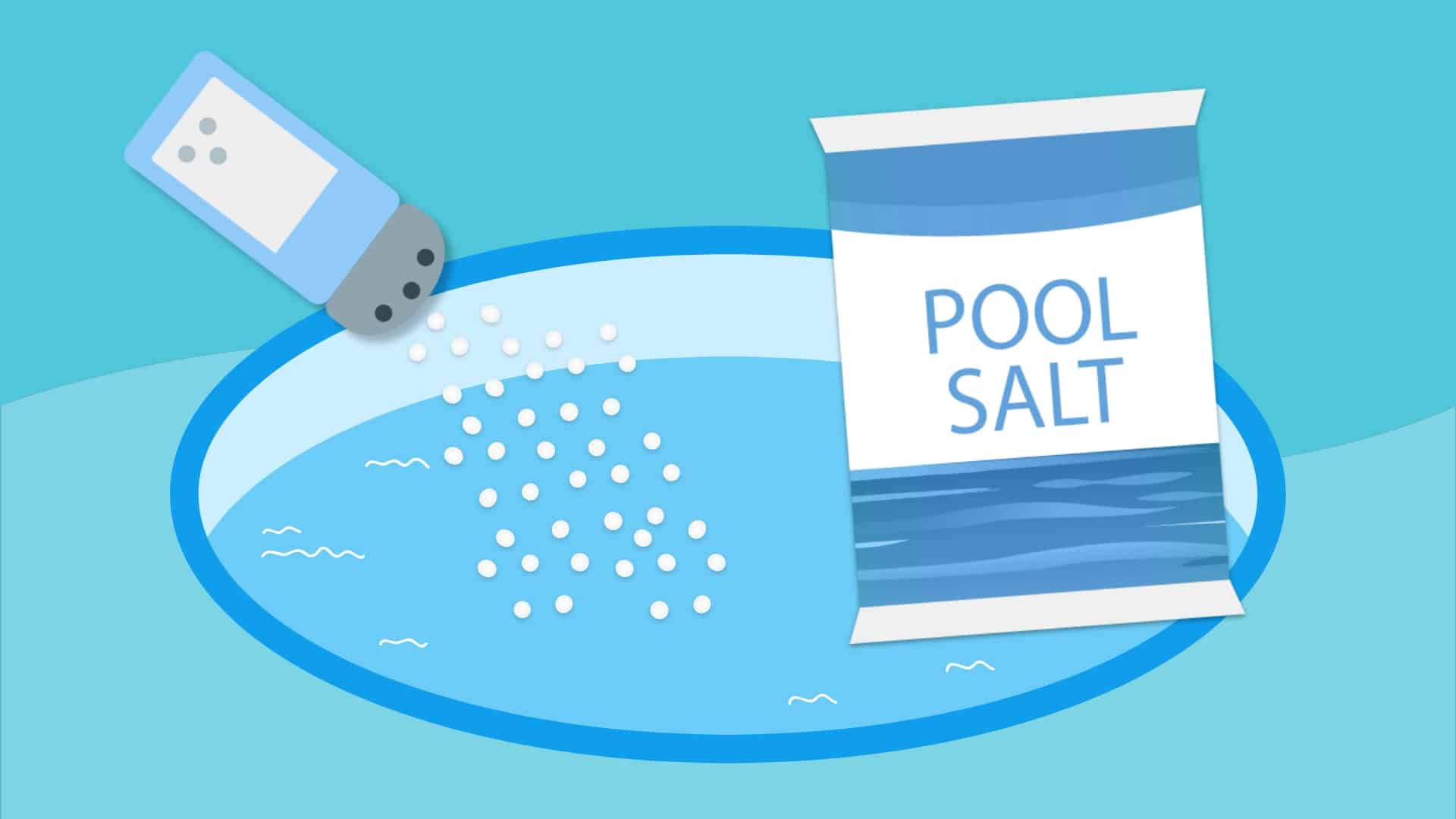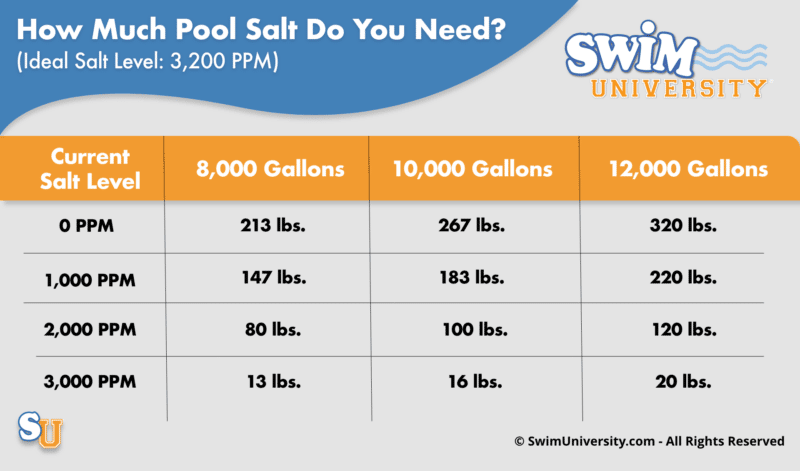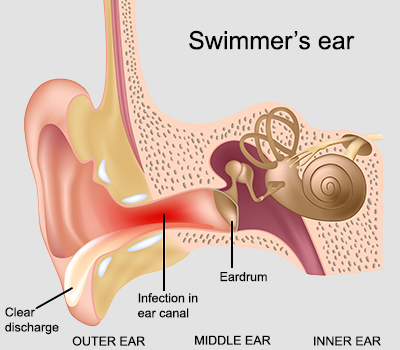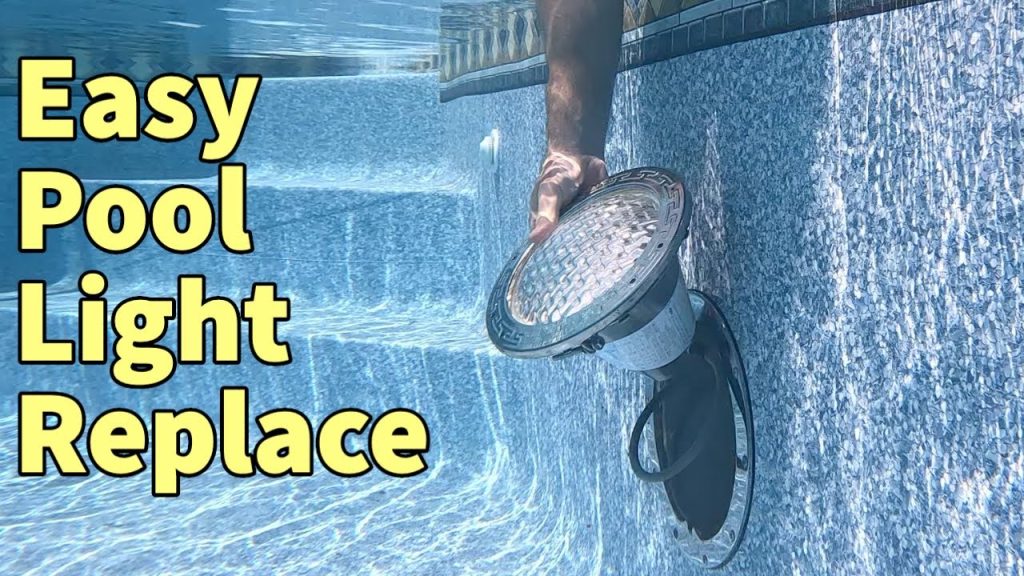Adding the right amount of salt to your swimming pool is crucial. It ensures water quality and protects pool equipment.
Swimming pools need a specific salt level for optimal operation, especially if you have a saltwater pool. Too much or too little salt can cause issues, from skin irritation to equipment damage. Knowing the correct salt level is essential for a healthy and enjoyable swimming experience.
We will explore how much salt to add to your swimming pool to maintain the perfect balance. You’ll learn the importance of salt levels, the steps to measure and adjust salt, and tips for keeping your pool in top condition. Let’s dive in!
Introduction To Saltwater Pools
Saltwater pools are becoming more popular. They offer a more natural swimming experience. Instead of using traditional chlorine, these pools use salt. This salt is converted into chlorine by a generator. The result? A gentler, more enjoyable swim for you and your family.
Benefits Of Saltwater Pools
Switching to a saltwater pool has many advantages:
- Softer Water: Saltwater feels smoother on your skin.
- Less Maintenance: The generator makes chlorine automatically.
- Reduced Eye Irritation: Lower chlorine levels mean less stinging.
- Environmentally Friendly: Fewer chemicals are needed.
Difference Between Saltwater And Chlorine Pools
Understanding the differences can help you decide which pool is best for you:
| Feature | Saltwater Pool | Chlorine Pool |
|---|---|---|
| Chlorine Source | Generated from salt | Added manually |
| Maintenance | Less frequent | More frequent |
| Water Feel | Softer | Harsher |
| Cost | Higher initial cost | Lower initial cost |
Saltwater pools offer a more pleasant swimming experience. They are easier to maintain. Chlorine pools require more upkeep. Choose what fits your needs best.

Credit: www.swimuniversity.com
Determining Salt Levels
Maintaining the correct salt levels in your swimming pool is crucial. It ensures the water remains clear and safe for swimming. Understanding how to measure and adjust these levels is key.
Ideal Salt Concentration
The ideal salt concentration for most pools is between 2,700 and 3,400 parts per million (ppm). This range helps the salt chlorinator work efficiently. Too little salt and the system won’t produce enough chlorine. Too much salt can damage the pool equipment.
| Salt Level | Action |
|---|---|
| Below 2,700 ppm | Add salt |
| 2,700 – 3,400 ppm | Optimal level |
| Above 3,400 ppm | Remove water and add fresh water |
Tools For Measuring Salt Levels
Measuring the salt levels in your pool can be done using several tools. These tools provide accurate readings and help maintain optimal salt concentration.
- Salt Test Strips: Dip the strip in water and compare the color change to a chart.
- Digital Salt Meters: These devices give a digital readout of the salt concentration.
- Salt Test Kits: These kits involve adding reagents to a water sample and observing the color change.
Using these tools ensures your pool’s salt levels remain within the ideal range. Regular testing helps prevent issues and keeps the water safe and pleasant to swim in.
Calculating Salt Requirements
Knowing the right amount of salt to add to your swimming pool is crucial. Proper salt levels ensure your pool remains clean and safe. Let’s explore how to calculate the salt needs for your pool.
Pool Size And Volume
First, determine your pool’s size and volume. This information is essential for accurate calculations. Here’s how you can do it:
- Measure the pool’s length, width, and depth.
- Use the following formulas based on your pool shape:
Rectangular Pools:
Length x Width x Average Depth x 7.5 = Volume in GallonsCircular Pools:
Diameter x Diameter x Average Depth x 5.9 = Volume in GallonsHaving the volume of your pool helps in determining the right amount of salt to add.
Existing Salt Levels
Before adding any salt, check your pool’s current salt levels. Use a reliable salt water test kit for accurate results.
Here’s a simple step-by-step:
- Dip the test strip into the pool water.
- Wait for the strip to change color.
- Compare the strip to the chart provided with the kit.
Knowing your current salt level helps you adjust accurately. The ideal salt level for most pools is between 2700-3400 ppm (parts per million).
Now, calculate the amount of salt needed. Use this formula:
| Current Salt Level (ppm) | Desired Salt Level (ppm) | Pool Volume (gallons) | Salt Needed (lbs) |
|---|---|---|---|
| 2000 | 3000 | 20,000 | 167 lbs |
Subtract the current salt level from the desired level. Multiply the result by the pool volume in gallons. Divide by 1000 to get the amount of salt in pounds.
Desired Level: 3000 ppm, Current Level: 2000 ppm, Pool Volume: 20,000 gallons
(3000 – 2000) x 20,000 / 1000 = 167 lbs of salt
Always add salt gradually. Test the levels again to ensure accuracy.
Adding Salt To Your Pool
To determine how much salt to add to a swimming pool, check the current salt level. Aim for 2,700-3,400 ppm. Use a saltwater test kit to measure accurately.
Adding salt to your pool ensures clean and comfortable swimming. Many pool owners prefer saltwater systems for their benefits. Saltwater pools are gentler on the skin and eyes. They also require less maintenance.Types Of Pool Salt
Choosing the right pool salt is crucial. The most common types are solar salt, mechanically evaporated salt, and mined salt. Solar salt comes from evaporated seawater. It is usually less expensive. Mechanically evaporated salt is purer. It undergoes an extra purification process. Mined salt is the purest form of pool salt. It is extracted directly from the earth.Step-by-step Process
First, test your pool’s current salt level. Use a saltwater test strip for accuracy. Next, calculate the amount of salt needed. Most pools need 3,000-3,500 ppm of salt. Then, distribute the salt evenly around the pool. Avoid dumping it all in one spot. After adding the salt, run the pool pump. This helps to dissolve and circulate the salt. Finally, retest the salt levels after 24 hours. Adjust if needed. By following these steps, you ensure a well-balanced saltwater pool. “`Maintaining Salt Levels
Maintaining the right salt levels in your swimming pool is crucial for a clean and safe swimming experience. Proper salt levels ensure that your pool’s saltwater chlorinator works efficiently, keeping the water clear and free from harmful bacteria. This section will guide you on how to maintain those salt levels effectively.
Regular Testing
Regular testing is essential to ensure the salt levels are within the recommended range. You can use salt test strips or a digital salt tester. Aim for a salt level between 2,500 and 4,000 ppm (parts per million).
Here’s a simple testing routine:
- Test the water weekly.
- After heavy rains.
- After adding large amounts of water.
Testing weekly helps detect any imbalance quickly.
Adjusting Salt Levels
If your salt levels are too low, you need to add more salt. Follow these steps:
- Turn on the pool pump.
- Add the recommended amount of pool salt.
- Let the pump run for 24 hours to circulate the salt.
Check the salt levels again after 24 hours. Repeat if necessary.
If the salt levels are too high, you must dilute the pool water:
- Partially drain the pool.
- Add fresh water.
- Test the salt levels again.
Maintaining the correct salt levels is easy with regular testing and adjustments. Remember to always follow the manufacturer’s guidelines for your specific pool system.

Credit: www.youtube.com
Troubleshooting Common Issues
Maintaining the right salt levels in your swimming pool is essential. It ensures the pool is safe and comfortable. Yet, sometimes things can go wrong. Here, we will explore how to handle high and low salt levels.
High Salt Levels
High salt levels can cause problems in your pool. You might notice a salty taste or irritation in the eyes. To fix this, follow these steps:
- Test the salt levels with a reliable test kit.
- If levels are too high, drain a portion of the pool water.
- Refill the pool with fresh water to dilute the salt.
- Retest the water to ensure the levels are within the recommended range (usually 2500-4500 ppm).
Low Salt Levels
Low salt levels can affect the pool’s chlorinator. It may not produce enough chlorine, leading to algae growth. Here’s what to do:
- Test the current salt levels in the pool.
- Use a salt calculator to determine the needed salt amount.
- Add the calculated salt amount slowly. Spread it evenly across the pool.
- Allow the salt to dissolve by running the pool pump for at least 24 hours.
- Retest the water to ensure the levels are within the recommended range.
Keeping salt levels in check is crucial. It helps maintain a clean and enjoyable swimming pool experience.
Health And Safety Tips
Maintaining the right salt level in your swimming pool is essential. It ensures both the safety and enjoyment of swimmers. Here are some health and safety tips to follow when adding salt to your pool.
Safe Handling Of Pool Salt
Handling pool salt safely is crucial. Always wear protective gear such as gloves and safety goggles. This protects your skin and eyes from irritation.
When pouring the salt, do it slowly. This helps to prevent dust from flying into the air. Always store pool salt in a dry and cool place. Keep it out of reach of children and pets.
Use a clean scoop or container to measure the salt. This ensures you add the correct amount to the pool. Follow the manufacturer’s instructions on the packaging. It will guide you on the right quantities to use.
Preventing Over-salting
Over-salting your pool can cause problems. It can damage the pool equipment and make swimming uncomfortable. To prevent over-salting, check the salt levels regularly with a salt test kit.
Always add salt in small amounts. Then, test the water before adding more. This way, you can monitor and adjust the levels accurately.
Keep a log of the salt levels and amounts added. This helps to track the changes over time. If you are unsure about the salt levels, consult a pool professional. They can provide expert advice and assistance.

Credit: www.youtube.com
Conclusion And Best Practices
Adding the right amount of salt to your swimming pool is essential for maintaining water quality and ensuring a pleasant swimming experience. By following best practices, you can keep your pool in top condition and enjoy crystal-clear water all season long.
Long-term Maintenance Tips
- Regular Testing: Test the salt levels in your pool weekly. Use a reliable saltwater testing kit.
- Monitor Chlorine Levels: Keep an eye on chlorine levels. Ensure they stay within the recommended range.
- Clean Salt Cell: Inspect and clean the salt cell regularly. This ensures efficient chlorine production.
- Address Salt Buildup: Look for salt buildup on pool surfaces and equipment. Clean as needed.
- Balance Water Chemistry: Maintain balanced pH, alkalinity, and calcium hardness. These factors impact salt efficiency.
Final Thoughts
Maintaining the right salt level in your swimming pool is crucial. It ensures a safe and enjoyable swimming environment. By following these best practices, you can achieve long-term pool health. Regular testing, cleaning, and monitoring are key. Remember to balance water chemistry for optimal results.
Frequently Asked Questions
How Much Salt Should I Add To My Pool?
The amount of salt depends on your pool size. Typically, 3,000-4,000 ppm is ideal. Check your pool manufacturer’s guidelines.
Can I Add Too Much Salt To My Pool?
Yes, adding too much salt can damage pool equipment. Always measure carefully and follow guidelines for safe salt levels.
How Do I Measure Salt Levels In My Pool?
Use a saltwater test kit or electronic salt meter. These tools provide accurate measurements of your pool’s salt levels.
How Often Should I Check My Pool’s Salt Levels?
Check your pool’s salt levels monthly. Regular monitoring ensures your pool stays within the recommended salt range for safety.
Conclusion
Adding the right amount of salt to your pool is essential. It ensures clear, safe water for swimming. Remember to check your pool’s salt levels regularly. Use a saltwater test kit for accuracy. Follow the manufacturer’s guidelines on salt quantities.
Too much salt can cause issues. Too little can affect water quality. Adjust as needed to maintain balance. Keeping these tips in mind will help you enjoy a pleasant swimming experience. Happy swimming!



